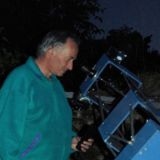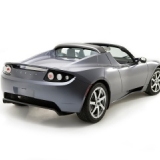INDI Library v2.0.7 is Released (01 Apr 2024)
Bi-monthly release with minor bug fixes and improvements
USB hubs - a never ending story
- Hellriegel
-
 Topic Author
Topic Author
- Offline
- Senior Member
-

- Posts: 44
- Thank you received: 10
USB hubs - a never ending story was created by Hellriegel
Hi Chris,
USB hubs (or rather USB as such) are a major and most annoying topic. You will find an number of concerning topics in this forum
Only recently we tested 7 different powered USB hubs (USB2 as well as USB3) connected to the controlling PC of our public observatory and than connected to two different Fujitsu laptops, all running KStars/EKOS/INDI
.
The hubs were connected to the PC/laptops by high qualitiy "active" 3m USB2 and USB3 cables which had been tested successfully separately with every single device. The hubs then were step-wise "loaded" with a Canon 750D, a QHY5LII mono, a MGen autoguider, and a SonyA7II - no mount controller was attached since that worked over a RS232 serial connection. But I found mount controllers are a minor issue on hubs.
Result of our tests: only 3 out of 7 hubs worked at all with all devices attached (one USB3 hub, the two others were USB2) - but only one of the USB2 hubs worked satisfying when connected to the laptops as well!
Connected to the laptops one or another hub would work with more or less devices attached. Some hubs worked part-time with only some of the devices connected, some combinations of hub and devices failed completely. Different USB cables between hub and devices were tested and these obviously come in different qualities as well. Starting streaming from the QHY also seemed to degrade the stability of the connections. And to some extent bugs or some kind of sensitivity on the side of the INDI drivers might as well interfere and stop devices from working at all.
Our results which, i am afraid, will differ from those of others with different setups, are as follows:
USB2 tends to be more stable/reliable with most devices; hub power should be at least 3,5A at 5V. Use high quality cables as well. The male connectors should fit firmly and not shaky. And make sure not to use a mere charging USB cable! (Happened to us while testing)
I still wonder how people get these USB devices to work, especially cameras, connected to a RasPi?!
PS: At our observatory we changed to a compact € 300 PC with 10 USB ports that are connected to two internal hubs (USB2 and USB3) and use long (>= 2m) USB cables to connect to the devices. (OK, one USB hub is used to power some cross-hair LEDs).
CS
Michael
Please Log in or Create an account to join the conversation.
Replied by Alfred on topic USB hubs - a never ending story
Please Log in or Create an account to join the conversation.
- Patrick Chevalley
-

- Offline
- Elite Member
-

- Posts: 210
- Thank you received: 104
Replied by Patrick Chevalley on topic USB hubs - a never ending story
But we must also remember some basic plumbing rules: it is not possible to connect two camera that use 100% of the usb bandwidth and try to put the two flux in one cable.
Personally I always use separate direct cable from the computer to the camera and guide camera. But the hub is OK for the mount, the focuser, the filter wheel and probably other low bandwidth devices.
This meant you need at least 3 usb port on the computer and be sure it not use an internal hub for the two camera ports.
Please Log in or Create an account to join the conversation.
- Ferran Casarramona
-

- Offline
- Senior Member
-

- Posts: 79
- Thank you received: 25
Replied by Ferran Casarramona on topic USB hubs - a never ending story
USB has a limit of hubs in cascade it can handle and I think the best practice is to limit using a "computer <-> hub <-> devices" configuration.
Some years ago I tried to use 2 active USB cables to comunicate my computer to my telescope, camera, etc. It had a random behavior.
Now I has the configuration "computer <-> ethernet <-> old laptop <-> hub <-> 4 devices (ST8, FS2, MaxDome, Robofocus)" working ok.
Please Log in or Create an account to join the conversation.
Replied by Brent on topic USB hubs - a never ending story
Please Log in or Create an account to join the conversation.
Replied by Tom on topic USB hubs - a never ending story
I am not expert in linux what so ever. Try this " Adding dwc_otg.speed=1 to /boot/cmdline.txt" then reboot your RPI3. Plug every of your devices into your 7-ports powered USB hub and try it out. Hope can save the day.
Tom
Please Log in or Create an account to join the conversation.
Replied by kostas on topic USB hubs - a never ending story
Please Log in or Create an account to join the conversation.
- Clive Stachon
-

- Offline
- Elite Member
-

- Posts: 407
- Thank you received: 74
Replied by Clive Stachon on topic USB hubs - a never ending story
RPI3 Fedora testing out on AMD desktop Fedpra 28 - running kstars 2.9.4 , Indilib 1.7.4 ?????
Please Log in or Create an account to join the conversation.
- Hellriegel
-
 Topic Author
Topic Author
- Offline
- Senior Member
-

- Posts: 44
- Thank you received: 10
Replied by Hellriegel on topic USB hubs - a never ending story
However beware that non-powered USB2 devices can draw up to 0.5 A and USB3 devices up to 0.9A per port. Using a 10 port hub with a 2.5A power supply might be on the low side.
To complicate things even more the USB-C connector (which I have not seen on astro devices yet but only on cell phones and tablets) may draw up to 3A per port. So don't charge Your cell phone from the same hub when using it for internet connections
And to top all this: USB-PD (USB Power Delivery) may request 5V, 12V or even 20V and up to 5A (= 100W max power) from the charging device! These values are considered for USB connected displays for example. But it will take some time before we see devices like these at our telescopes.
Please Log in or Create an account to join the conversation.
Replied by Andrew on topic USB hubs - a never ending story
www.amazon.ca/gp/product/B00HNWY9SW
I have operated with this in the dead of winter under -25°C without a hitch. It powers my RPi3, and up to 2 USB dew heaters. Plus it controls my Guide Cam, DSLR, and memory stick with one port to spare. My Pi's USB ports are occupied with the Hub, Mount, WiFi and USB extension cable to a tablet and keyboard via another powered hub at my table.
Please Log in or Create an account to join the conversation.
Replied by fmozza on topic USB hubs - a never ending story
You're right about the quality of USB hubs. I have success with this USB2 hub from coolgear:
www.coolgear.com/product/usb-2-0-over-ip...e-over-tcpip-network
I have had this in my obs for about 6 years powered up and temperature ranging from -40C to +40C. So far so good ... These are a little more expensive, but you can save on gray hair tonics.
jmh
Please Log in or Create an account to join the conversation.
- Jean-Claude JESIOR
-

- Offline
- Elite Member
-

- Posts: 209
- Thank you received: 33
Replied by Jean-Claude JESIOR on topic USB hubs - a never ending story
Remember to connect FIRST the USB 3 devices (cameras in my case) to the hub, and THEN the additional USB 2 devices (scope in my case).
The first device you plug in will configure the port, so always connect USB 3-capable hubs or devices first.
If you plug in a USB 2 hub first, all devices connected or "daisy-chained" to that hub will operate up to the maximum transfer rate of USB 2 speed (480 Mbps).
If you are on Apple, check connections with System Information (Apple () menu > About This Mac > System Report, then select : Hardware / USB, use ⌘R Refresh Information)
THEN power up the devices and start the astronomy software.
Please Log in or Create an account to join the conversation.
